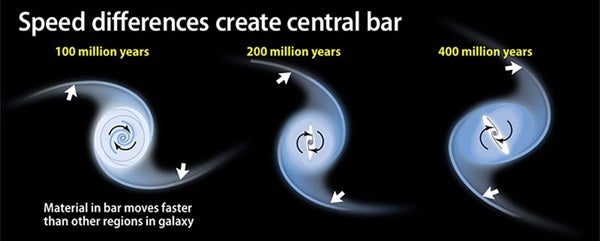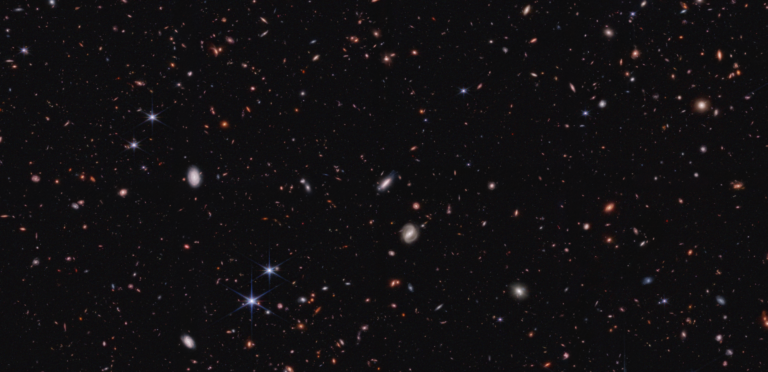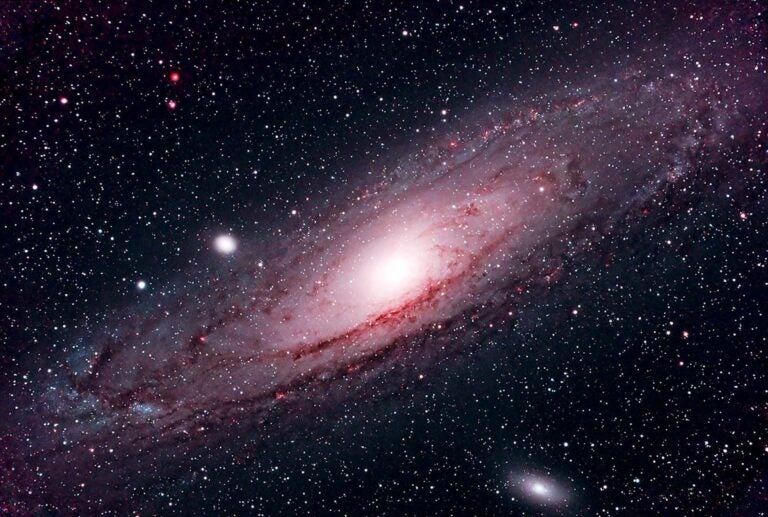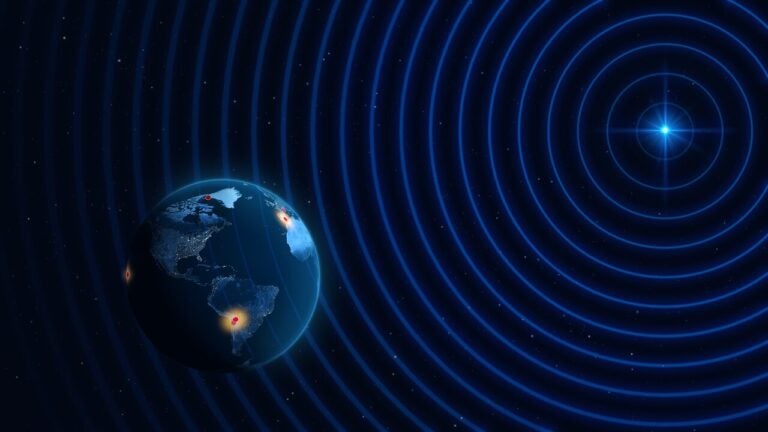Gravitational instabilities in the centers of galaxies, or gravitational disturbances from nearby galaxies, can cause density waves. As the waves rotate around the galaxy, they hold their shape like the blades of a fan.
When a wave reaches a cloud of cold molecular gas, the density in the cloud may increase enough to cause the cloud to collapse under its own gravity, eventually forming stars.Bars can also affect star formation by moving large amounts of gas toward (or away from) the galactic center. Gas in the inner region of the galaxy will orbit at a higher speed than the bar. When this gas catches up to the bar and passes through it, the bar’s stronger gravity slows it, so the material loses energy. As a result, the gas falls toward the galactic center. If this process funnels enough gas toward the galactic center, a tremendous period of star formation — called a nuclear starburst — follows.
Farther out in the galaxy, the gas moves more slowly than the bar. When the bar overtakes the gas, the bar pulls the material forward, speeding it up. The fast-moving gas will then gain energy and be flung outward, away from the galactic center. — Bradley W. Peterson, Iowa State University, Ames










